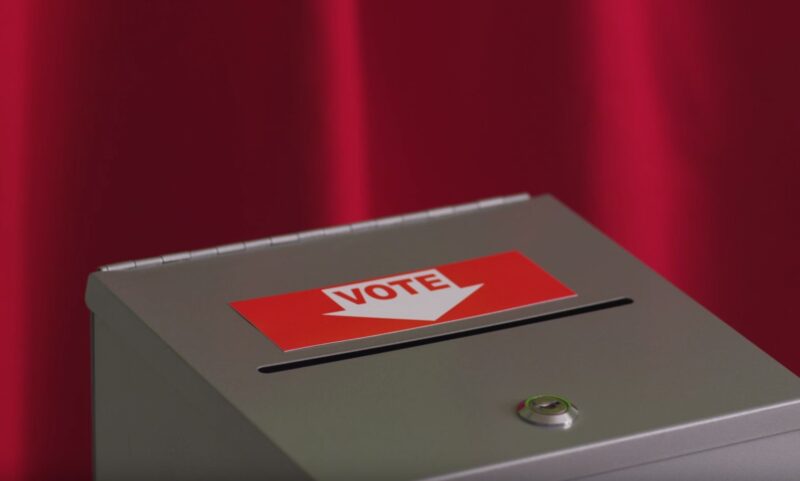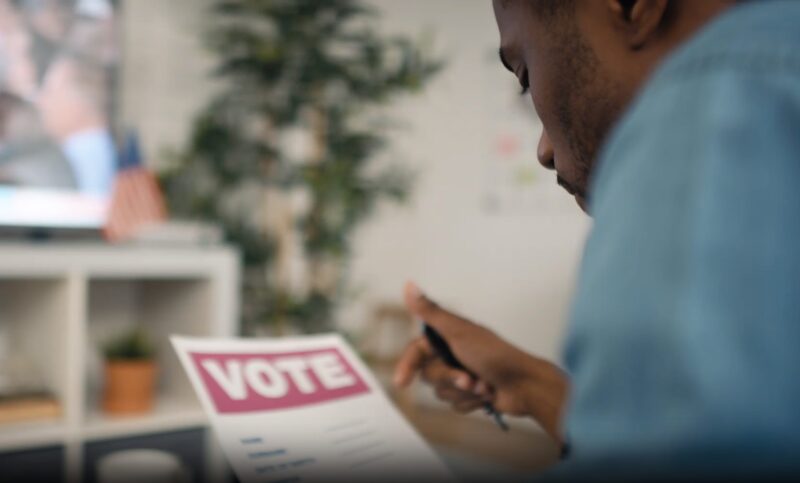Opinion polls have become an integral part of the political landscape, offering snapshots of public sentiment on various issues and candidates. While they can provide valuable insights, there’s a growing concern about their potential impact on voter behavior.
The Bandwagon Effect

One of the most discussed phenomena in the context of opinion polls is the bandwagon effect. This refers to the tendency of individuals to align their views or behaviors with what appears to be the prevailing trend.
When voters see a candidate leading in the polls, they might be swayed to vote for that candidate based solely on their perceived popularity, rather than their policies or qualifications. This can lead to a snowball effect, where the leading candidate gains even more support simply because they’re seen as the “winning” choice.
Conversely, candidates trailing in the polls might experience a drop in support as potential voters believe their cause is lost. This can demoralize both the candidates and their supporters, leading to reduced campaign efforts and lower voter turnout.
The Underdog Effect
Contrary to the bandwagon effect, the underdog effect posits that some voters are drawn to candidates or causes that appear to be at a disadvantage.
Some individuals might cast their vote for a trailing candidate out of sympathy or a desire to support an underrepresented voice. While this can level the playing field, it also means that some votes are cast based on emotion rather than a careful consideration of the issues.
Candidates leading in the polls might become complacent, believing their victory is assured. This can lead to reduced campaign efforts, fewer policy discussions, and a general lack of engagement with voters.
Misleading methodologies
Not all polls are created equal. The methodology used to conduct a poll can greatly influence the results, leading to potentially misleading representations of public opinion.
Sampling errors
- Inaccurate representation of the target demographic.
- Over-reliance on certain groups leads to skewed results.
- Failure to account for undecided or non-responsive participants.
Leading questions
- Framing questions in a way that pushes respondents towards a particular answer.
- Using loaded terms or biased language.
- Failing to provide a neutral or balanced set of response options.
The Spiral of Silence

This theory suggests that individuals are less likely to voice an opinion if they believe it’s in the minority, for fear of isolation or ridicule.
Voters might choose to keep their opinions to themselves if they believe they’re in the minority. This can lead to a lack of diverse voices in public discourse, as well as feelings of alienation among certain groups.
Opinion polls can reinforce the belief that a particular view is the majority opinion, even if it’s not. This can further suppress minority voices and lead to a homogenized political landscape.
Implications for democracy

The potential negative effects of opinion polls on voter behavior have broader implications for the democratic process.
Informed voting
- The emphasis on poll numbers can overshadow substantive policy discussions.
- Voters might make decisions based on popularity rather than informed choices.
Election outcomes
- Poll-driven voting can lead to unexpected election outcomes.
- The true will of the people might be obscured by the influence of polls.
The role of media
The media plays a significant role in disseminating poll results to the public. The way in which these results are presented can further exacerbate the negative effects of opinion polls on voter behavior.
Sensationalism over substance
Media outlets, in a bid to grab attention, might focus on the most sensational aspects of a poll. This could mean highlighting a sudden surge or drop in support for a candidate, even if the change is within the margin of error. Such reporting can create a false narrative around a candidate’s prospects.
Endless analysis
The 24-hour news cycle has led to endless analysis and dissection of poll results. This constant barrage can lead to voter fatigue and a sense of inevitability about election outcomes, potentially discouraging some from voting.
Poll results

A poll result, especially when presented as a percentage, carries with it an aura of authority. Voters might give undue weight to these numbers, viewing them as an accurate representation of reality, even when they’re not.
Poll results are often reported with decimal points, giving them an appearance of precision. However, given the inherent uncertainties in polling methodologies, such precision can be misleading. It’s essential for voters to understand the margin of error and not be swayed by seemingly exact numbers.
Educating the electorate
One way to mitigate the negative effects of opinion polls is through voter education. An informed electorate is better equipped to interpret poll results critically and make independent decisions.
Understanding margins of error
Educating voters about the concept of margin of error can help them interpret poll results more accurately. Emphasizing that a small lead within the margin of error doesn’t necessarily indicate a clear advantage.
Recognizing biases
Workshops and informational campaigns can help voters recognize biases in poll questions and methodologies. Encouraging critical thinking and skepticism when faced with sensational poll-related headlines.
The role of social media

In today’s digital age, social media platforms have become powerful amplifiers of opinion polls. Their influence extends beyond traditional media, reaching a vast and diverse audience, but this comes with its own set of challenges.
- Echo Chambers: Social media algorithms often show users content that aligns with their existing beliefs. When poll results are shared within these echo chambers, it can reinforce existing biases and limit exposure to diverse viewpoints.
- Viral Misinformation: Incorrect or misleading interpretations of poll results can quickly go viral on social media. Without proper fact-checking mechanisms in place, many users might accept these interpretations at face value, leading to a misinformed electorate.
Transparency is crucial!
As the influence of opinion polls grows, there’s an increasing demand for transparency in how they’re conducted. This transparency can help restore trust and ensure that polls serve as informative tools rather than manipulative ones.
- Open Methodologies: Polling organizations should be encouraged to share their methodologies openly. This includes details about sample sizes, demographics, question framing, and more. An informed public can then better assess the reliability of poll results.
- Independent Audits: Third-party audits of polling organizations can ensure adherence to best practices and ethical standards. Such audits can help identify biases and errors, ensuring that poll results are as accurate as possible.
How do they look across the globe?

Opinion polls are not unique to any one country or region. They are conducted worldwide, but their influence and the public’s trust in them can vary significantly.
North America vs. Europe
Frequency of Polling
- North America: Polls, especially in the U.S., are conducted almost continuously, with a surge during election seasons.
- Europe: While polls are also frequent, some countries, like France, have restrictions on publishing polls close to elections to prevent undue influence.
Public Trust
- North America: Trust in polls has been wavering, especially after some significant misses in recent elections.
- Europe: Trust varies by country. In nations like Germany, polls are generally seen as reliable, while in others, skepticism is higher.
Here is a table where you can see a comparison with other parts of the world.
| Region | Key Characteristic | Typical Methodology | Trust Level |
|---|---|---|---|
| North America | High Frequency | Online/Phone | Moderate |
| Europe | Regulated | Mixed | Varied |
| Asia | Tech-Driven | Online/Mobile | High |
| Africa | Diverse Demographics | Face-to-Face | Moderate |
| Latin America | Political Volatility | Mixed | Low |
| Oceania | Stable Institutions | Online/Phone | High |
FAQs
Final words
The relationship between opinion polls and voter behavior is pretty complex, as you can see. It’s crucial to prioritize the integrity of the democratic process. Approach the polls with a critical mind and advocate for transparency, education, and innovation. That way we can ensure that they serve the public interest and contribute to a more informed and engaged electorate.

